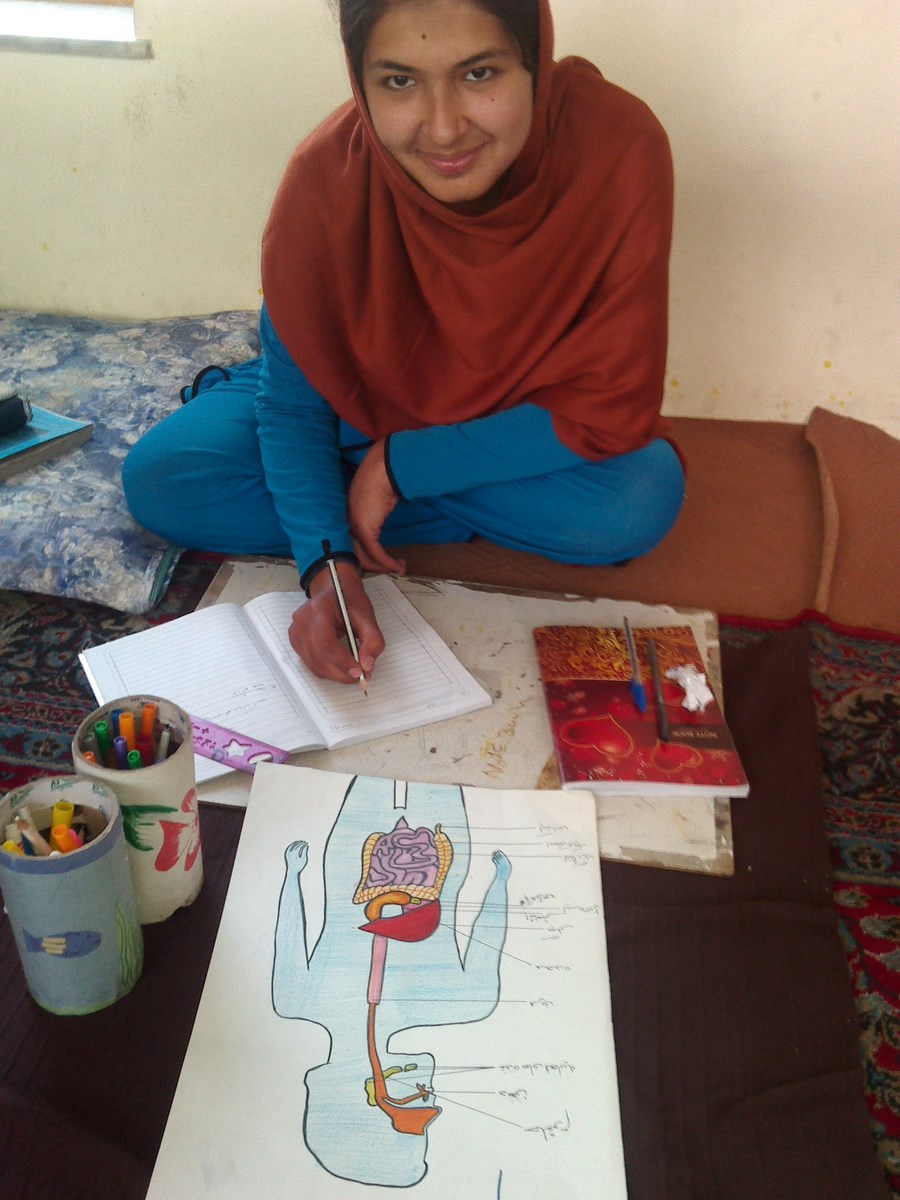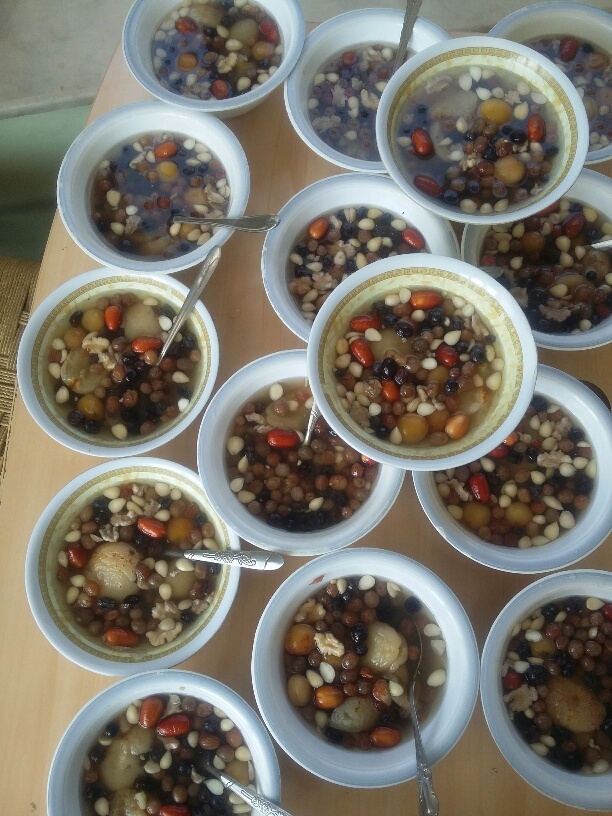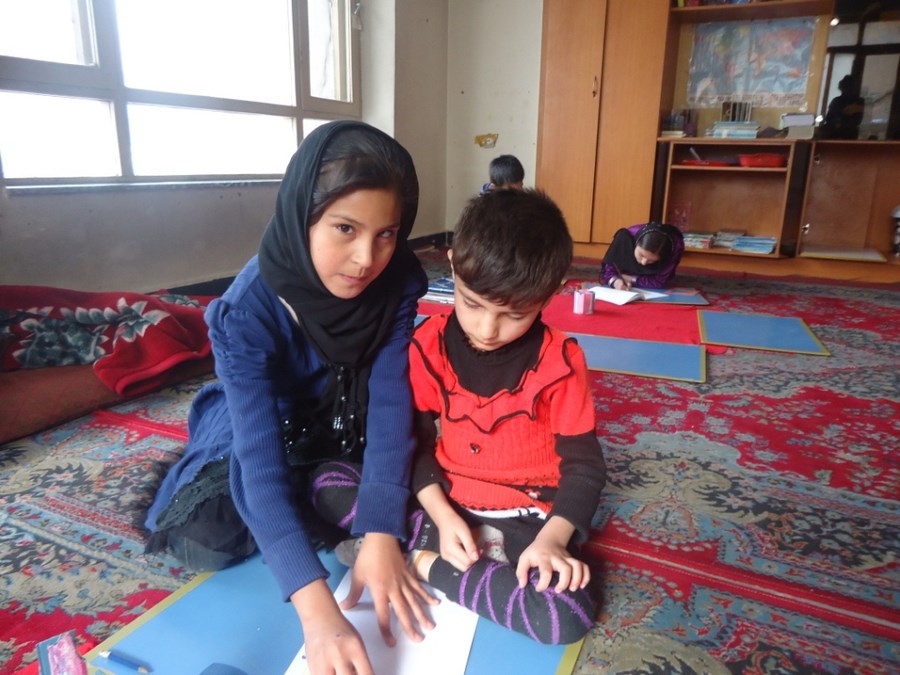Go to Photo Gallery of Life in the House of Flowers
 Imagine being a child who has no home, or lives in a tent, eating only bread at every meal. Imagine living a life of loss and stress and powerlessness. Then imagine coming to a place, a warm house, where at first you might be scared and lonely, but where you are adopted by an older child. You learn that you can sleep easy at night, and older children will help you when you need it. You discover you get to eat meat and fruit and even ice cream sometimes, and you learn to sing and to read, and you can play freely out in the yard and swing on the swingset.
Imagine being a child who has no home, or lives in a tent, eating only bread at every meal. Imagine living a life of loss and stress and powerlessness. Then imagine coming to a place, a warm house, where at first you might be scared and lonely, but where you are adopted by an older child. You learn that you can sleep easy at night, and older children will help you when you need it. You discover you get to eat meat and fruit and even ice cream sometimes, and you learn to sing and to read, and you can play freely out in the yard and swing on the swingset.
 Imagine being in a classroom with a gentle teacher and a soft carpet, where you can actually choose what you’d like to do, which hands-on material you’d like to use to learn your math, your letters or your countries, and where you can draw and paint. Imagine being in a place where you contribute to the community by helping clean up after meals, or by sweeping the floor, or helping in the kitchen. Imagine living in a place where you matter, where you are listened to and respected, and where you find yourself singing little songs in the morning. This is the life of a child in the House of Flowers.
Imagine being in a classroom with a gentle teacher and a soft carpet, where you can actually choose what you’d like to do, which hands-on material you’d like to use to learn your math, your letters or your countries, and where you can draw and paint. Imagine being in a place where you contribute to the community by helping clean up after meals, or by sweeping the floor, or helping in the kitchen. Imagine living in a place where you matter, where you are listened to and respected, and where you find yourself singing little songs in the morning. This is the life of a child in the House of Flowers.
The Children’s Interconnected Lives
 From the beginning, both boys and girls have lived at the House of Flowers, growing up together naturally as brothers and sisters. We started with eight children in 2002 and have grown gradually over the years. As of October 2012 there are 33 children living at the House of Flowers. Of these, 12 are girls and 23 are boys.
From the beginning, both boys and girls have lived at the House of Flowers, growing up together naturally as brothers and sisters. We started with eight children in 2002 and have grown gradually over the years. As of October 2012 there are 33 children living at the House of Flowers. Of these, 12 are girls and 23 are boys.
The older children, both boys and girls, do a great deal to take care of their younger ‘siblings’ in the House, from feeding the baby a bottle to helping little ones wash their hands to carrying trays of food to meals. Even 4 year old Ramin helps 1 1/2 year old Shekib clean his nose.
The Daily Routine
Mornings begin in the House as they do with children all around the world. The children get up early to do their morning prayers, brush their teeth, make their beds, and have bread and jam or cheese and tea for breakfast. All of the children (except the very youngest) spend half their day at school and half at the House of Flowers. When they walk the 15 minutes to school they are escorted by one of the men of the House.
get up early to do their morning prayers, brush their teeth, make their beds, and have bread and jam or cheese and tea for breakfast. All of the children (except the very youngest) spend half their day at school and half at the House of Flowers. When they walk the 15 minutes to school they are escorted by one of the men of the House.
After their 3-4 hours at school, their escort comes to pick them up and they return to the House. Their time at the House is spent in a combination of play time/down time, lunch, and 2-3 hours of Montessori lessons with their House of Flowers teacher.
Evenings are spent relaxing with the staff of the House, having dinner and helping clean up, reading, playing, doing homework, chatting with each other, working on projects or doing art.
Finally around 8 or 9 pm they begin to brush their teeth and slowly head for bed.The night guards, Uncle Amjed and Aunt Lailama, sleep in the boys’ and girls’ dorm rooms to be there if needed. The days are full yet smooth, consistently flowing.
Responsibilities
All of the children are integrally involved in the running of the House.  They learn how to cook and gain other vital household skills through their chores and responsibilities in the House.
They learn how to cook and gain other vital household skills through their chores and responsibilities in the House.
Every single child in the House is on a committee. There is the Cleaning Committee, the Health Committee, the Order and Discipline Committee, the Culture Committee, and the Resolution [of disputes] Committee, giving them an opportunity to learn how to collaborate, contribute and solve problems. They take these roles quite seriously.
 Financial Skills All of the children receive a small allowance. They can then deposit their money into the House of Flowers bank, which is entirely run by the children. Each child has a savings passbook, and the ‘accountant’ (a rotating responsibility) provides oversight of the bank finances and takes care of deposits and withdrawals.
Financial Skills All of the children receive a small allowance. They can then deposit their money into the House of Flowers bank, which is entirely run by the children. Each child has a savings passbook, and the ‘accountant’ (a rotating responsibility) provides oversight of the bank finances and takes care of deposits and withdrawals.
The children often go shopping or go out to buy ice cream and other treats. Older children are sometimes sent on errands to buy bread or other small things needed for the House, to give them experience with shopkeepers and money.
From the staff, the children learn other life skills such as sewing, cooking, house repair, and how to play chess. The House of Flowers staff serves as parents, protectors, nurses, playmates and wise guides.
Go to Photo Gallery of Life in the House of Flowers
